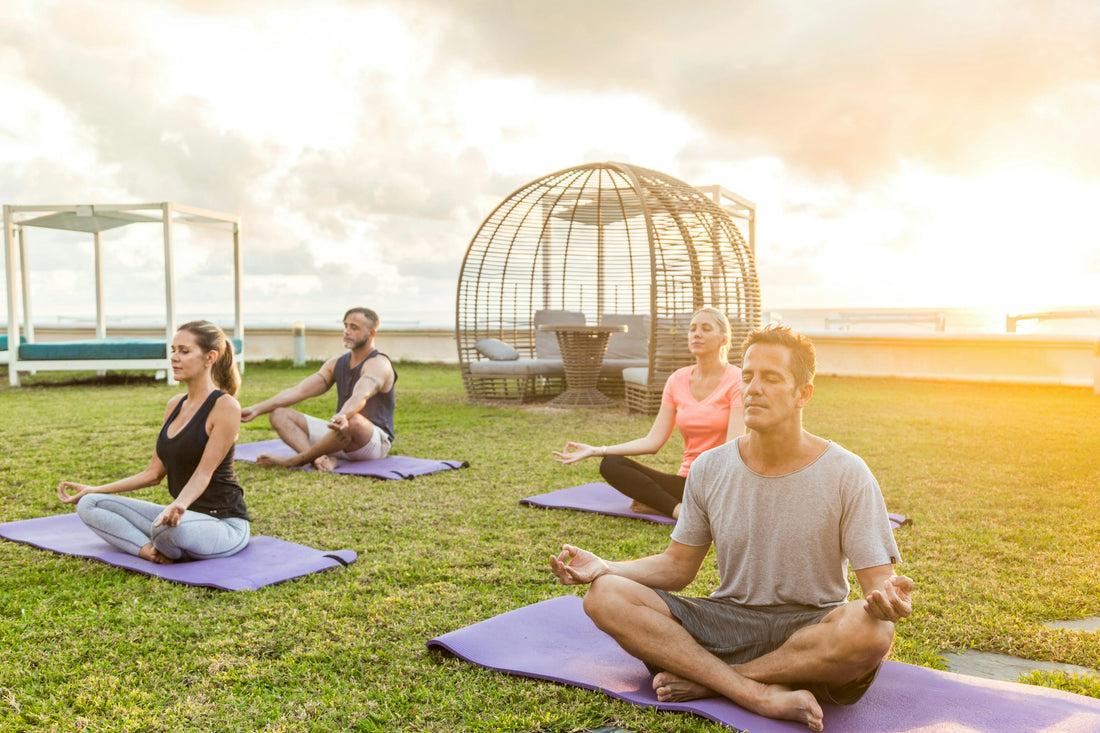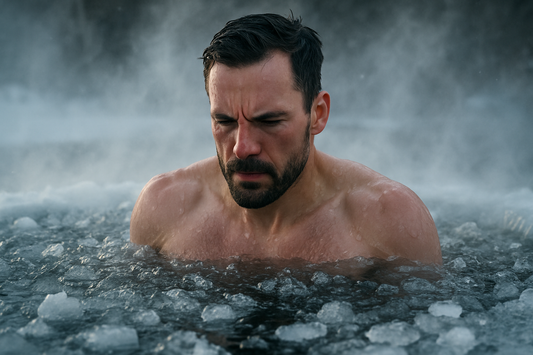
Ice Baths for the Body: Global Attitudes and Applications
Share
Ice baths, or cold water immersion, have gained significant popularity in recent years, particularly among athletes, fitness enthusiasts, and wellness seekers. While the idea of submerging oneself in cold water may seem daunting to many, when done correctly and in moderation, ice baths can offer a range of health benefits. This article will explore the science-backed advantages of ice baths, how the world views this practice, and how proper and moderate use of ice baths can positively impact your body.
Understanding the Science Behind Ice Baths
Ice baths work by exposing the body to cold temperatures, usually between 50°F to 59°F (10°C to 15°C), for a period of time (typically 5 to 15 minutes). The cold causes blood vessels to constrict, which reduces inflammation and decreases muscle soreness. After exiting the cold water, the body begins to warm up, leading to an increase in blood flow to the affected muscles. This process helps flush out toxins, promote healing, and accelerate recovery.
The Health Benefits of Ice Baths
While ice baths are often associated with athletes, their benefits extend to anyone who wants to enhance recovery, reduce inflammation, and improve mental resilience. Here are some of the key benefits that proper and moderate ice baths can bring:
1. Reduces Muscle Soreness and Inflammation
One of the primary reasons athletes and fitness enthusiasts use ice baths is to reduce Delayed Onset Muscle Soreness (DOMS). After intense exercise, micro-tears occur in the muscle fibers, causing inflammation and soreness. Ice baths help to reduce this inflammation by constricting blood vessels, which slows down the metabolic processes that contribute to swelling and pain. Once you exit the ice bath and your body begins to warm up, the blood flow to your muscles increases, helping to flush out the waste products and accelerate the healing process.
● Benefit for beginners: For those new to exercise or intense physical activity, ice baths can serve as a valuable tool for speeding up recovery and preventing long-term muscle damage.
2. Accelerates Recovery and Reduces Fatigue
Ice baths are not only beneficial for reducing muscle soreness but also for speeding up the overall recovery process. Cold immersion helps reduce fatigue by allowing the body to recover faster between training sessions or events. By increasing circulation and reducing muscle damage, your body is able to repair itself more efficiently, leading to faster recovery times and improved performance over time.
● Benefit for athletes: Professional athletes, especially those in endurance sports like marathon running or cycling, frequently use ice baths to recover from grueling training sessions, allowing them to train more consistently without overtraining.
3. Improves Circulation and Enhances Immune Function
Cold exposure, such as in an ice bath, promotes improved circulation. When you submerge yourself in cold water, blood flow is initially restricted to the extremities. Once you exit the cold and your body warms up, the blood vessels dilate, and fresh oxygenated blood flows back into the muscles and tissues. This process helps to improve circulation and supports the body's natural healing processes.
Additionally, cold exposure has been shown to stimulate the immune system, increasing the production of white blood cells and enhancing the body’s ability to fight infections. Over time, regular, moderate exposure to cold may help strengthen the immune response.
● Benefit for overall wellness: Ice baths are a great way to boost circulation and support your immune system, especially during cold and flu seasons.
4. Boosts Mental Toughness and Reduces Stress
Another powerful benefit of ice baths is their ability to enhance mental resilience. Cold immersion can be an intense experience, and learning to withstand the shock of cold water helps to build mental toughness. Many practitioners report feeling a sense of accomplishment after enduring the discomfort of an ice bath.
Additionally, cold exposure can trigger the release of endorphins, the body's natural mood-enhancing chemicals. This can help reduce feelings of anxiety, stress, and depression, providing an overall sense of well-being.
● Benefit for mental health: Regular ice baths can contribute to mental clarity and emotional stability, reducing stress and improving your overall sense of well-being.
5. Supports Skin and Hair Health
While the primary benefits of ice baths are related to muscle recovery and inflammation reduction, the cold water can also have positive effects on your skin and hair. The cold water helps to tighten pores, which can reduce the appearance of acne and improve overall skin tone. It also promotes healthy hair by constricting the hair follicles, potentially leading to shinier and stronger hair.
● Benefit for beauty and self-care: Cold therapy can contribute to clearer skin and healthier hair, making it a holistic addition to your wellness routine.
Global Attitudes Toward Ice Baths
While the use of ice baths has been embraced widely in the sports world, its popularity is also spreading across different cultures and health communities. In countries with a long tradition of cold water therapy, such as Scandinavia and the Netherlands, ice baths and cold plunges have been used for centuries for both physical and mental rejuvenation.
In Sweden, for instance, the practice of alternating between hot saunas and cold plunges has long been an integral part of the wellness culture. In the Netherlands, many athletes regularly use ice baths as part of their training recovery. Similarly, the Wim Hof Method, a popular breathing and cold exposure technique developed by Dutch extreme athlete Wim Hof, has gained a global following for its potential to improve both physical and mental well-being.
In contrast, in many Western countries, ice baths were initially viewed as a tool only for elite athletes. However, in recent years, the general public has started to recognize the wide-reaching benefits of cold exposure for recovery, stress reduction, and mental clarity. This shift in attitude has led to the development of commercial ice bath tubs and cold plunges, making it easier for people to incorporate cold therapy into their daily routines.
The Right Way to Use Ice Baths
While the benefits of ice baths are clear, it’s important to use them moderately and appropriately to avoid any negative effects. Overexposure to extreme cold can cause hypothermia, muscle stiffness, or even damage to tissues if done improperly. Here are a few guidelines for safe and effective use:
● Start with short sessions (3-5 minutes) and gradually increase the duration as your body adapts.
● Use water temperatures between 50°F and 59°F (10°C to 15°C), which is the ideal range for effective cold therapy.
● Avoid staying in too long—15 minutes is typically the maximum recommended duration.
● Listen to your body: If you experience excessive shivering, numbness, or discomfort, it’s time to exit the bath.
Conclusion
Properly and moderately using ice baths can have a profound positive impact on the body, aiding in muscle recovery, reducing inflammation, boosting circulation, improving mental toughness, and even promoting healthier skin and hair. As more people around the world embrace cold exposure, the benefits of ice baths are becoming more recognized and accessible to everyone—not just athletes.
For those looking to incorporate ice baths into their recovery or wellness routine, choosing the right tools is essential. Brands like SplaMe offer high-quality Ice Bath Tubs and Ice Bath Chillers that make it easy and safe to enjoy the benefits of cold therapy at home. With the right equipment and a mindful approach, you can experience all the advantages of ice baths without the hassle, making cold therapy a simple and effective part of your daily wellness practice.




